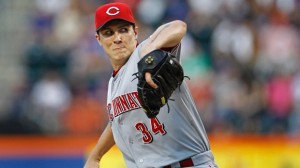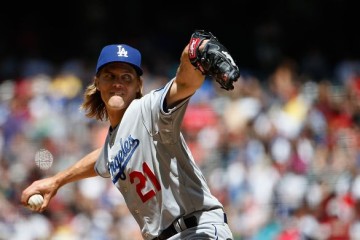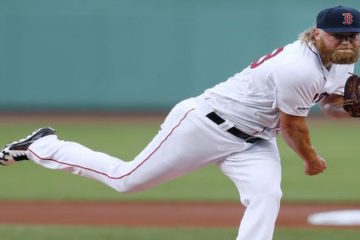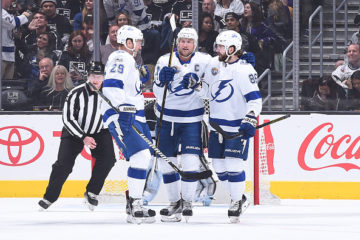Homer Bailey and the First Pitch Fastball
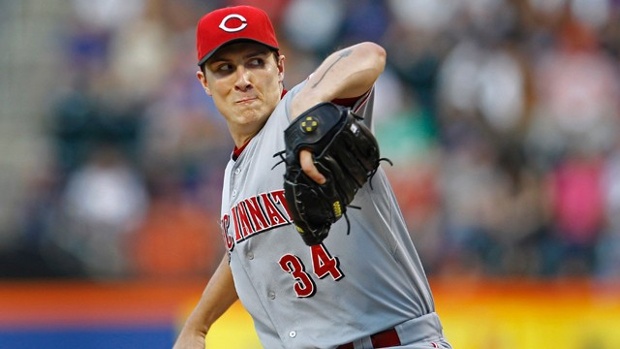
Homer Bailey’s no-hitter on Tuesday marked the fourth time in the history of the National League that a pitcher has thrown 2 straight no-hitters – not two consecutive starts, but the last two no-hitters that the National League has seen. He joins Warren Spahn, Sandy Koufax and Johnny Vander Meer (who actually did throw no-hitters in back to back starts in 1938).
Surprisingly, the no-hitter brings 27-year-old Bailey down to just a 3.57 ERA. Bailey’s peripherals are much improved this season after making wholesale changes to his approach. Bailey has added quite a bit more groundballs (48.6 percent this season, 44.9 percent in 2012 and 39.5 percent in 2011) and has also reduced his home runs. Both should be approached with a bit of skepticism though, as Bailey has actually decreased the number of pitches he’s thrown in the bottom half of the zone (54.06 percent in 2012 and 49.21 percent this year).
What can’t be challenged however, is Bailey’s incredible improvement with his first pitch fastball. In case you missed it, I wrote this article on “First Pitch Fastballs” – the analysis centered around Cole Hamels and other aces.
[am4show have=’p4;p7;p3;’ guest_error=’Front Office’ ]
My created formula on First Pitch Fastball Success Rate (using aces only) spit out Clayton Kershaw as having the highest success rate at 59.99 percent.
I plugged Bailey into that formula and his number was an astounding 60.91 percent!
Here is Bailey’s first pitch fastball the past three years according to Brooks Baseball Pitch F/X data.
| Year | Success Rate | Strike % | Foul % * | Whiff % ** | BAA/SLG/ISO | BABIP |
| 2011 | 43.95% | 37.88% | 14.85% | 4.24% | .457/.914/.457 | .367 |
| 2012 | 53.85% | 42.55% | 14.50% | 4.52% | .309/.655/.346 | .240 |
| 2013 | 60.91% | 47.27% | 9.55% | 5.00% | .191/.286/.095 | .191 |
* Foul percentage is a function of first pitch fastballs thrown not swings. His foul percentage as a function of swings is 51.88 percent in 2011, 51.33 percent in 2012, and 41.18 percent in 2013.
** Whiff percentage is a function of first pitch fastballs thrown not swings. His whiff percentage as a function of swings is 14.74 percent in 2011, 16 percent in 2012, and 21.57 percent in 2013!
As my study in the aforementioned article alluded to, first pitch fastball success is a great indicator of overall success and skill (and current performance). All of Bailey’s three-year trends in the above chart are phenomenal.
Another explanation for Bailey’s success can be with his mechanical consistency in each of his pitches. Here is a chart showing Bailey’s Vertical Release Points on each of his pitches the past three years.
| Pitch | 2011 | 2012 | 2013 |
| Fastball | 6.24 | 6.05 | 6.18 |
| Sinker | 6.19 | 5.98 | 6.10 |
| Slider | 6.21 | 6.04 | 6.14 |
| Curveball | 6.27 | 6.11 | 6.18 |
| Splitter | 6.16 | 5.97 | 6.12 |
An interesting note here is that in 2012 Bailey had the same vertical arm slot for his slider that he did with his fastball. It’s no surprise that in 2012, the slider was Bailey’s most effective breaking pitch. Opponents hit just .157/.249 (that’s a .092 ISO), and a .200 batting average on balls in play against the pitch.
Somewhat unsurprisingly, in 2013 the curveball has been Bailey’s most effective breaking pitch, as opponents hit just .188/.281/.094 and a .286 batting average on balls in play against it. The slider has slipped to a .253/.427/.173 and a .291 batting average on balls in play.
When a pitcher releases the majority of his offerings in nearly identical locations, it’s extremely difficult for the hitter to get an extra edge when the ball leaves the pitchers hand.
If Bailey keeps up this level of success with the fastball, it’s a near guarantee that he has an incredible second half. All he needs to do is turn around his 68 percent strand rate by making fewer mistakes with runners in scoring position. (Notice I didn’t say he has been unlucky!)
Here’s a final stat to digest;
With two strikes opponents hit just .092/.102/.010 and a .188 batting average on balls in play against Homer Bailey’s fastball.
Yu Darvish’s opponents hit .094/.113/.019 and a .278 batting average on balls in play against the two strike fastball.
Justin Verlander’s opponents hit .300/.350/.050 and a .462 batting average on balls in play against the two strike fastball.
Fun
[/am4show]


